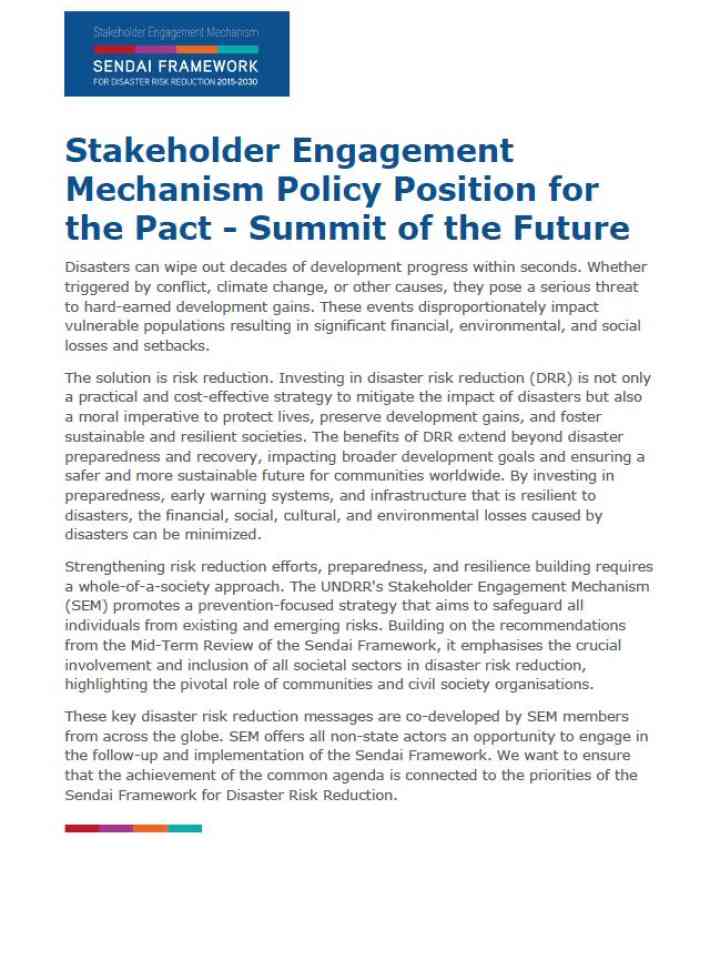Stakeholder Engagement Mechanism policy position for the Pact - Summit of the Future
This publication of UNDRR's Stakeholder Engagement Mechanism (SEM) constitutes its policy position for the Pact to be discussed during the Summit for the Future in September 2024. SEM promotes a prevention-focused strategy that aims to safeguard all individuals from existing and emerging risks. Building on the recommendations from the Mid-Term Review of the Sendai Framework, it emphasises the crucial involvement and inclusion of all societal sectors in disaster risk reduction, highlighting the pivotal role of communities and civil society organisations. These key disaster risk reduction messages are co-developed by SEM members from across the globe. SEM offers all non-state actors an opportunity to engage in the follow-up and implementation of the Sendai Framework. SEM wants to ensure that the achievement of the common agenda is connected to the priorities of the Sendai Framework for Disaster Risk Reduction.
Disasters can wipe out decades of development progress within seconds. Whether triggered by conflict, climate change, or other causes, they pose a serious threat to hard-earned development gains. These events disproportionately impact vulnerable populations resulting in significant financial, environmental, and social losses and setbacks. The solution is risk reduction. Investing in disaster risk reduction (DRR) is not only a practical and cost-effective strategy to mitigate the impact of disasters but also a moral imperative to protect lives, preserve development gains, and foster sustainable and resilient societies. The benefits of DRR extend beyond disaster preparedness and recovery, impacting broader development goals and ensuring a safer and more sustainable future for communities worldwide. By investing in preparedness, early warning systems, and infrastructure that is resilient to disasters, the financial, social, cultural, and environmental losses caused by disasters can be minimized. Strengthening risk reduction efforts, preparedness, and resilience building requires a whole-of-a-society approach.
Explore further
